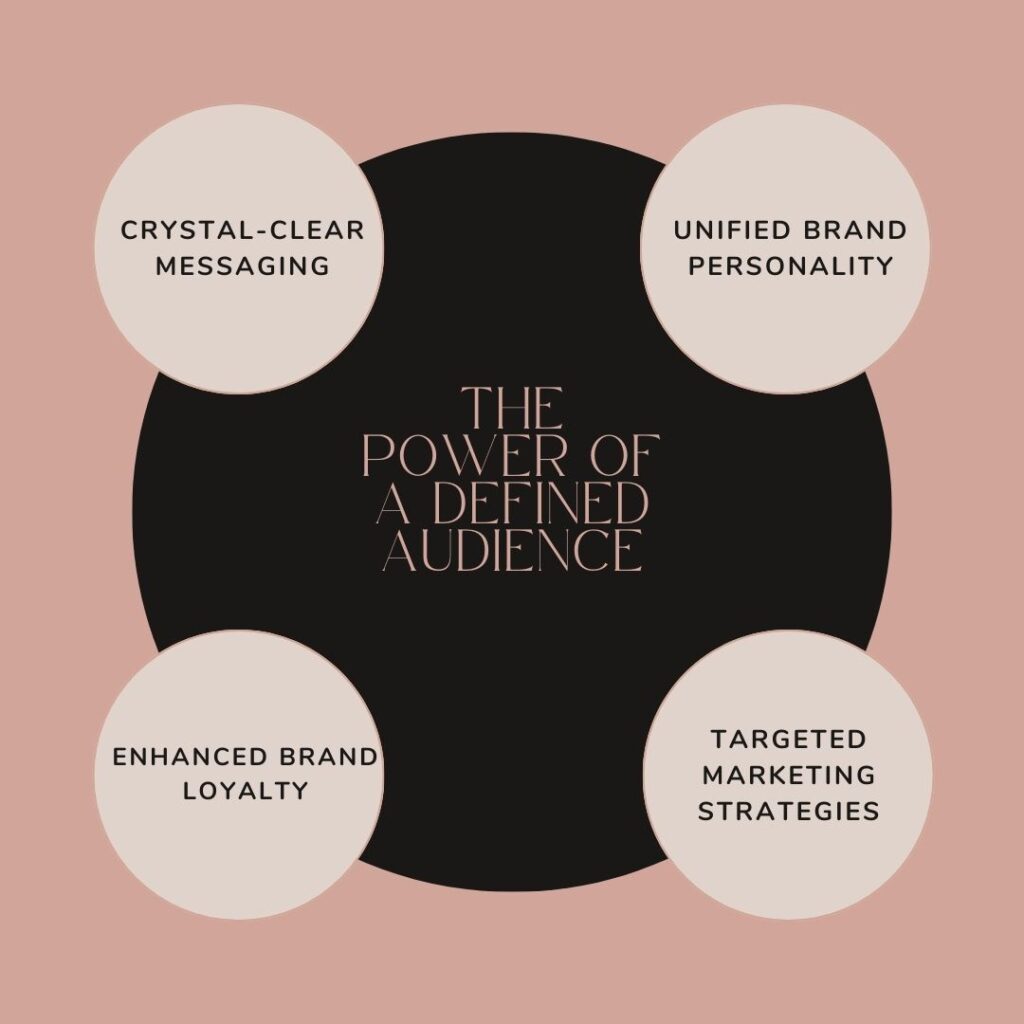
Brand Equity & The Results of Trying to Appeal to Everyone
Eroded Brand Equity: The Dangers of Trying to Appeal to Everyone
Inconsistent Brand Perception: The Dangers of Trying to Appeal to Everyone
In the crowded and competitive landscape of marketing, establishing a strong and consistent brand identity is crucial for success. However, many businesses fall into the trap of trying to appeal to everyone, leading to a fragmented and inconsistent brand perception that ultimately hinders their growth. Here’s why focusing on a specific audience and creating a unified message is essential:
The Perils of “Appealing to Everyone”: Reduced Brand Equity

- Lack of Clarity and Focus: Trying to appeal to everyone dilutes your message and makes it difficult to stand out. You end up with generic messaging that doesn’t resonate with any specific audience, leaving them uninspired and unengaged.
- Eroded Brand Equity: Inconsistency across channels and touchpoints erodes trust and weakens your brand identity. Consumers become confused about what your brand stands for and what makes you unique, leading them to consider alternatives.
- Missed Opportunities for Connection: When you don’t know who you’re targeting, you miss valuable opportunities to connect with your ideal customers on a deeper level. You end up talking at them, not with them, failing to address their specific needs and aspirations.
- Ineffective Marketing Efforts: Marketing campaigns become less effective when they lack a focused target audience. Resources are wasted on channels and platforms that are not likely to yield significant results, leading to diminishing returns and frustration.
Brand Equity: The Power of a Defined Audience

Knowing who you’re targeting unlocks the door to a powerful and consistent brand image. Here’s how focusing on a defined audience can benefit your marketing efforts:
- Crystal-Clear Messaging: A clear understanding of your target audience’s demographics, psychographics, and pain points allows you to craft a message that resonates with their specific needs and desires. This strengthens your brand message and makes it more impactful.
- Unified Brand Personality: By focusing on a distinct audience, you can develop a consistent brand personality across all touchpoints. This includes your visual identity, messaging, tone of voice, and customer service interactions, creating a cohesive and memorable brand experience.
- Enhanced Brand Loyalty: When your brand resonates with your target audience, it builds trust and loyalty. Customers feel understood and valued, leading them to become repeat customers and brand advocates.
- Targeted Marketing Strategies: With a defined audience in mind, you can develop targeted marketing strategies that are more likely to reach the right people and generate desired results. This allows you to optimize your resource allocation and maximize your return on investment.
Crafting a Unified Brand Image:

To build a strong and consistent brand image, focus on the following:
- Conduct thorough target audience research: Deeply understand your ideal customer, including their demographics, psychographics, values, and pain points.
- Define your brand values and personality: Identify what your brand stands for and the personality you want to convey.
- Develop a consistent brand voice: Ensure your tone and language are consistent across all communication channels.
- Create a unified visual identity: This includes your logo, color palette, typography, and imagery, ensuring visual consistency across platforms.
- Monitor and adapt: Regularly monitor your brand perception and adjust your strategies based on feedback and data-driven insights.
Remember, a consistent brand image is not built overnight. It requires a commitment to your target audience, a clear understanding of your brand values, and consistent execution across all touchpoints. By embracing a focused approach and prioritizing brand consistency, you can create a strong and memorable brand identity that resonates with your ideal customers and drives long-term success.
MEASURING AND EVALUATING BRAND EQUITY
Brand equity is a highly diverse topic when it comes to its definition. However, it can be defined as a set of brand assets and liabilities, linking to the brand’s name and symbol, subtracting from, as well as adding to, the value provided by a product or service, and providing value to customers as well as to a firm.
The concept of brand equity is referred to by marketers as customer-based brand equity, which can be defined as
“the differential effect of brand knowledge on consumer response to the marketing of the brand”
or
“a brand is said to have positive (negative) customer-based brand equity when consumers react more (less) favorably to the element of the marketing mix of the brand than they do to the same marketing mix element when it is attributed to a fictitiously named or unnamed version of the product or service.”
Brand equity has been studied in three different perspectives, which include
1) customer-based perspective,
2) company-based perspective (brand equity is viewed as a tool to support a company’s activities to be more effective, such as facilitating growth and expansion, defending a product from competition, helping to attract new customers, and retaining existing ones), and
3) financial market-based perspective (brand equity is viewed as a financial asset that can be bought, sold, and traded).
Additional Reading
Measuring and Evaluating Brand Equity
Understanding how customers perceive your brand is crucial for building and maintaining strong brand equity. In their research, Johansson, Hjalmarson, and Backhaus (2009) delve into the concept of “customer-based brand equity,” particularly regarding low-involvement products and highly homogeneous product categories. This sets the stage for their research question and purpose: how can we effectively measure and evaluate brand equity in such contexts?
Johansson et al. (2009) acknowledge the diverse interpretations of brand equity, drawing on definitions from prominent scholars like Aaker (1992). They emphasize the customer-centric perspective, defining brand equity as “the differential effect of brand knowledge on consumer response to the marketing of the brand” (Keller, 1993; Wood, 2000). This essentially means that a brand with positive customer-based brand equity elicits more favorable reactions from consumers compared to the same product or service under a generic or unknown name.
The authors highlight three key perspectives on brand equity: customer-based, company-based (focusing on brand equity’s role in supporting growth, competition, and marketing effectiveness), and financial-based (viewing brand equity as an intangible asset impacting cash flow). While all three are valuable, Johansson et al. (2009) argue that the customer-based perspective is fundamental for truly understanding brand equity. This perspective views brand equity through the lens of customer perception, recognizing it as a “nonobjective” element influencing the attractiveness or repulsion of a particular offering.
Johansson et al. (2009) utilize a conceptual framework that identifies five key brand equity asset dimensions: brand loyalty, brand awareness, perceived quality, brand associations, and other proprietary brand assets. Each dimension impacts both customer and firm value, contributing to factors like satisfaction, confidence in purchase decisions, and marketing program effectiveness (Aaker, 1992; Yoo et al., 2000).
Source: Johansson, P. O., Hjalmarson, H., & Backhaus, J. (2009). Measuring and evaluating brand equity in low-involvement product categories. Journal of Brand Management, 16(6), 421-438. https://doi.org/10.1057/bm.2009.14
The 5 Biggest Marketing Mistakes to Avoid





